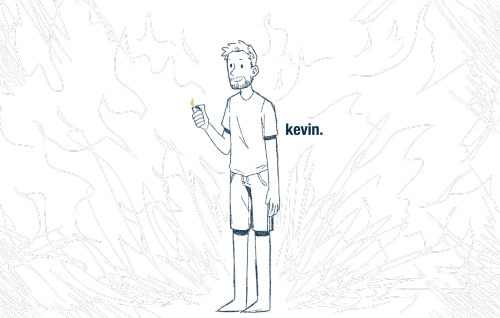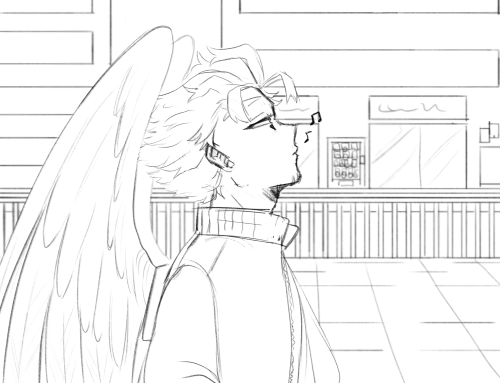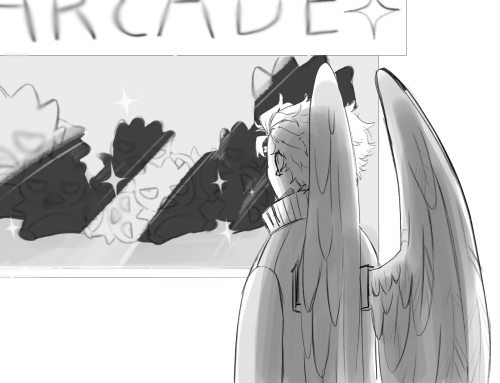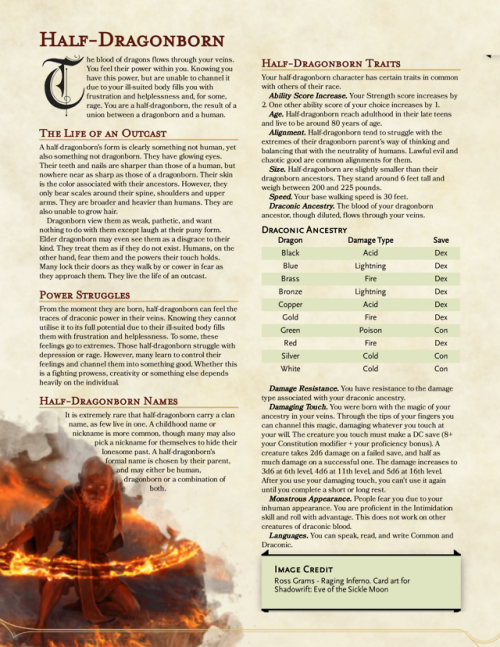Follow Me On Twitter For More Vampire Nonsense






Follow me on Twitter for more vampire nonsense
More Posts from Easthernico and Others

hey there everyone ! do your past vs current self !

Academic writing advice inspired by Umberto Eco’s ‘How to Write a Thesis’:
Planning
Determine primary sources/bibliography.
Determine secondary sources/bibliography.
Find title.
Brainstorm a table of contents with as much detail as possible (with chapters, sections and even paragraphs and sub-paragraphs - see How to Write a Thesis’ own table of contents as an example at the end of this document) (if the first drafted table of contents is good enough, it will not be necessary to start the writing from the beginning).
Do a first draft of the introduction.
Note-taking and research
Use Google Scholar to make sure you do not miss important sources.
Keep the table of contents in mind when researching and take notes of which sources could go where.
While note-taking, differentiate which parts could be used as quotations from the ones that are simply important for the argument.
Eco underlines the importance of what he calls reading sheets, which can be understood as your notes on your readings. According to him, these should contain:
information about the author if he is not a well-known figure;
a brief (or long) summary;
they should mostly consist of quotations (accompanied by all the corresponding page numbers)
any commentaries you might want to add;
an indication of which part (or parts) of your table of contents the information mentioned belongs to.
Keep reading sheets on primary sources (which should be the longest) separate from those on secondary sources (which should only be 1-2 pages long).
In the end, re-read the notes and color-code all the different parts according to where they would fit in your table of contents.
Writing and editing
A good place to start would be by redrafting the introduction.
Define every key/technical term used/mentioned unless indisputably obvious.
General writing tips:
keep sentences short;
do not be afraid to repeat the subject twice (ex: Roberta went to the shop (…) Roberta bought carrots and tomatoes);
avoid excessive details;
avoid subordinate clauses (orações subordinadas);
avoid vague language;
avoid unnecessary adjectives;
avoid the passive voice.
While drafting, write everything that comes to mind. Leave the editing for the end.
Use your tutor as a Guinea pig. Make them read your first chapters (and, progressively, all the rest) well before delivery is due.
Ask for as much feedback as possible. Ask colleagues, friends and/or family to read your work. They will provide you with more diversified feedback, as well as allowing you to know if your writing is clear to anyone.
Stop playing ‘solitary genius’.
Don’t insist on starting with the first chapter. Start with what you know best and feel more comfortable writing about, then fill in the gaps.
Leave time for editing and try to take at least a one or two days long break in between writing and editing.
Do not forget to fill in the gaps. When you revisit your writing, go through it with all these writing tips in mind as well as a conscience of what your most common mistakes are.
Use Hemingway in the final editing phase.
Quotations and footnotes
Since there are two kinds of sources (primary and secondary), there are also two kinds of quotations: either we quote a text which we will interpret, or we quote a text which supports your interpretation.
Some quotation rules to know:
“Quote the object of your interpretive analysis with reasonable abundance.”
“Quote the critical literature only when its authority corroborates or confirms your statements. (…) when quoting or citing critical [aka secondary] literature, be sure that it says something new, or that it confirms authoritatively what you have said.”
“If you don’t want readers to presume that you share the opinion of the quoted author, you must include your own critical remarks before or after the passage.”
“Make sure that the author and the source of your quote are clearly identifiable.”
“When a quote does not exceed two or three lines, you can insert it into the body of the text enclosed in quotation marks. (…) When the quote is longer, it is better to set it off as a block quotation. In this case the quotation marks are not necessary, because it is clear that all set-off passages are quotes, and we must commit to a different system for our observations. (Any secondary developments [like the quote’s reference] should appear in a note.) (…) This method is quite convenient because it immediately reveals the quoted texts; it allows the reader to skip them if he is skimming, to linger if he is more interested in the quoted texts than in our commentary, and finally, to find them immediately when need be.”
Some footnote rules to know:
“Use notes to add additional supporting bibliographical references on a topic you discuss in the text. For example, ‘on this topic see also so-and-so.’”
“Use notes to introduce a supporting quote that would have interrupted the text. If you make a statement in the text and then continue directly to the next statement for fluidity, a superscript note reference after the first statement can refer the reader to a note in which a well-known authority backs up your assertion.”
“Use notes to expand on statements you have made in the text. Use notes to free your text from observations that, however important, are peripheral to your argument or do nothing more than repeat from a different point of view what you have essentially already said.”
“Use notes to correct statements in the text. You may be sure of your statements, but you should also be conscious that someone may disagree, or you may believe that, from a certain point of view, it would be possible to object to your statement. Inserting a partially restrictive note will then prove not only your academic honesty but also your critical spirit.”
“Use notes to provide a translation of a quote, or to provide the quote in the original language.”





okay so maybe i was ambitious 🎃🎃🎃 (original au by @alittlesliceofcucumber!! go check out their HCs for spooky!lads content)

it’s almost spooky month which means i can legally draw the muffinteers as witches






It's VERY important Tokoyami, he swears!!
soft asks to get to know people
what song makes you feel better?
what’s your feel-good movie?
what’s your favorite candle scent?
what flower would you like to be given?
who do you feel most you around?
say three nice things about yourself (three physical and three non-physical).
what color brings you peace?
tag someone (or multiple people) who make you feel good.
what calms you down?
what’s something you’re excited for?
what’s your ideal date?
how are you?
what’s your comfort food?
favorite feel-good show?
for every emoji you get, tag someone and describe them in one word.
compliment the person who sent you this number.
fairy lights or LED lights?
do you still love stuffed animals?
most important thing in your life?
what do you want most in the world right now?
if you could tell your past self one thing, what would it be?
what would you say to your future self?
favorite piece of clothing?
what’s something you do to de-stress?
what’s the best personal gift someone could give you (playlist, homemade card, etc.)
what movie would you want to live in?
which character would you want to be?
hugs or hand-holding?
morning, afternoon or night?
what reminds you of home (doesn’t have to mean house… just things that remind you of the feeling of home)?





HALF-RACES
Homebrew for all the half-human combinations possible with the races found in the player’s handbook! I had a lot of fun making these, though they took a while. Have fun playing!
This was made for D&D 5e and feedback is much appreciated!

brown eyes

how many wizards does it take to build a table?
-
 nights-flying-fox reblogged this · 2 weeks ago
nights-flying-fox reblogged this · 2 weeks ago -
 nights-flying-fox reblogged this · 2 weeks ago
nights-flying-fox reblogged this · 2 weeks ago -
 nights-flying-fox liked this · 2 weeks ago
nights-flying-fox liked this · 2 weeks ago -
 bunnygirl678 reblogged this · 2 weeks ago
bunnygirl678 reblogged this · 2 weeks ago -
 bunnygirl678 liked this · 2 weeks ago
bunnygirl678 liked this · 2 weeks ago -
 roachspeaks liked this · 3 weeks ago
roachspeaks liked this · 3 weeks ago -
 crypticreplacement099 liked this · 3 weeks ago
crypticreplacement099 liked this · 3 weeks ago -
 zeena-the-fandom-fiend reblogged this · 3 weeks ago
zeena-the-fandom-fiend reblogged this · 3 weeks ago -
 echoingkarma liked this · 3 weeks ago
echoingkarma liked this · 3 weeks ago -
 errantpolaris reblogged this · 3 weeks ago
errantpolaris reblogged this · 3 weeks ago -
 errantpolaris liked this · 3 weeks ago
errantpolaris liked this · 3 weeks ago -
 alothcorfisered reblogged this · 4 weeks ago
alothcorfisered reblogged this · 4 weeks ago -
 roshytsunami reblogged this · 4 weeks ago
roshytsunami reblogged this · 4 weeks ago -
 bobblestheninja reblogged this · 4 weeks ago
bobblestheninja reblogged this · 4 weeks ago -
 justhereforifs liked this · 1 month ago
justhereforifs liked this · 1 month ago -
 albion-skullberry reblogged this · 1 month ago
albion-skullberry reblogged this · 1 month ago -
 albion-skullberry liked this · 1 month ago
albion-skullberry liked this · 1 month ago -
 adhd-fandom-and-gay reblogged this · 1 month ago
adhd-fandom-and-gay reblogged this · 1 month ago -
 adhd-fandom-and-gay liked this · 1 month ago
adhd-fandom-and-gay liked this · 1 month ago -
 couldntgiveastraightanswer liked this · 1 month ago
couldntgiveastraightanswer liked this · 1 month ago -
 spectator-lawful-evil reblogged this · 1 month ago
spectator-lawful-evil reblogged this · 1 month ago -
 pennypenguin187 reblogged this · 1 month ago
pennypenguin187 reblogged this · 1 month ago -
 araqeial liked this · 1 month ago
araqeial liked this · 1 month ago -
 gatorgal223 reblogged this · 1 month ago
gatorgal223 reblogged this · 1 month ago -
 redmoonfaerie liked this · 1 month ago
redmoonfaerie liked this · 1 month ago -
 b4tty-br4t liked this · 1 month ago
b4tty-br4t liked this · 1 month ago -
 silveralec liked this · 1 month ago
silveralec liked this · 1 month ago -
 haha-trauma liked this · 1 month ago
haha-trauma liked this · 1 month ago -
 charlilovesknights liked this · 1 month ago
charlilovesknights liked this · 1 month ago -
 omnifatal reblogged this · 1 month ago
omnifatal reblogged this · 1 month ago -
 omnifatal liked this · 1 month ago
omnifatal liked this · 1 month ago -
 isilearusce reblogged this · 1 month ago
isilearusce reblogged this · 1 month ago -
 crispychaosstudentus reblogged this · 1 month ago
crispychaosstudentus reblogged this · 1 month ago -
 athenaefilia liked this · 1 month ago
athenaefilia liked this · 1 month ago -
 populus-alba reblogged this · 1 month ago
populus-alba reblogged this · 1 month ago -
 silas-in-the-stars liked this · 1 month ago
silas-in-the-stars liked this · 1 month ago -
 stygianswordsman liked this · 1 month ago
stygianswordsman liked this · 1 month ago -
 impossiblyatomictiger-blog reblogged this · 1 month ago
impossiblyatomictiger-blog reblogged this · 1 month ago -
 bacarraroses reblogged this · 1 month ago
bacarraroses reblogged this · 1 month ago -
 vivian-the-fae reblogged this · 1 month ago
vivian-the-fae reblogged this · 1 month ago -
 m1dori-eyes reblogged this · 1 month ago
m1dori-eyes reblogged this · 1 month ago -
 m1dori-eyes liked this · 1 month ago
m1dori-eyes liked this · 1 month ago -
 demitoby liked this · 1 month ago
demitoby liked this · 1 month ago -
 queenrubyred liked this · 1 month ago
queenrubyred liked this · 1 month ago -
 pogwater reblogged this · 1 month ago
pogwater reblogged this · 1 month ago -
 pogwater liked this · 1 month ago
pogwater liked this · 1 month ago -
 pizzahell liked this · 1 month ago
pizzahell liked this · 1 month ago -
 lyrical-sorrows liked this · 1 month ago
lyrical-sorrows liked this · 1 month ago -
 batsu4eva liked this · 1 month ago
batsu4eva liked this · 1 month ago
